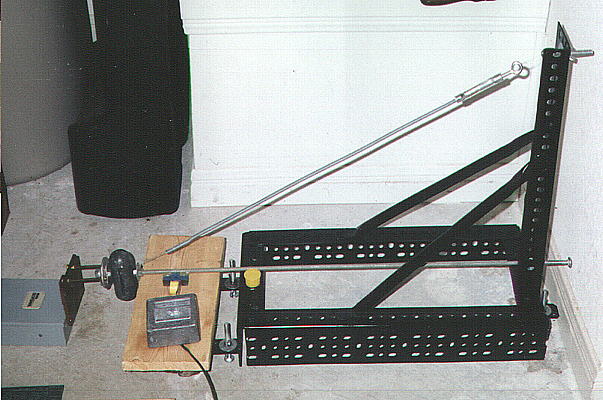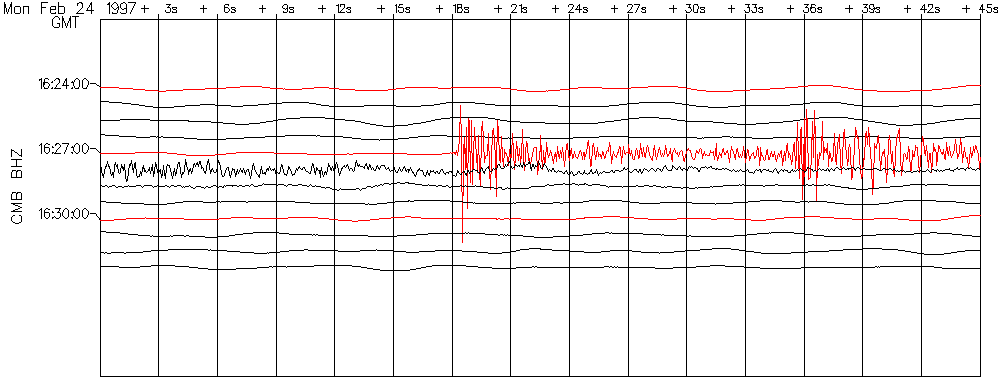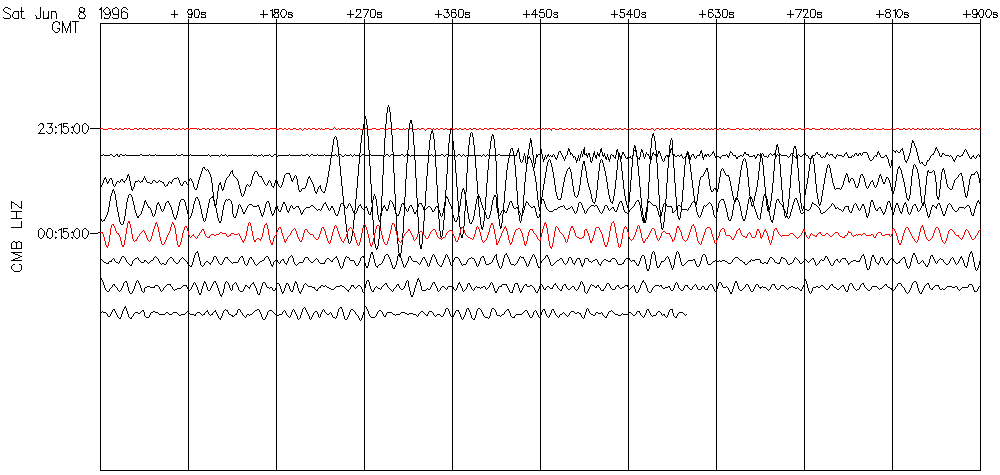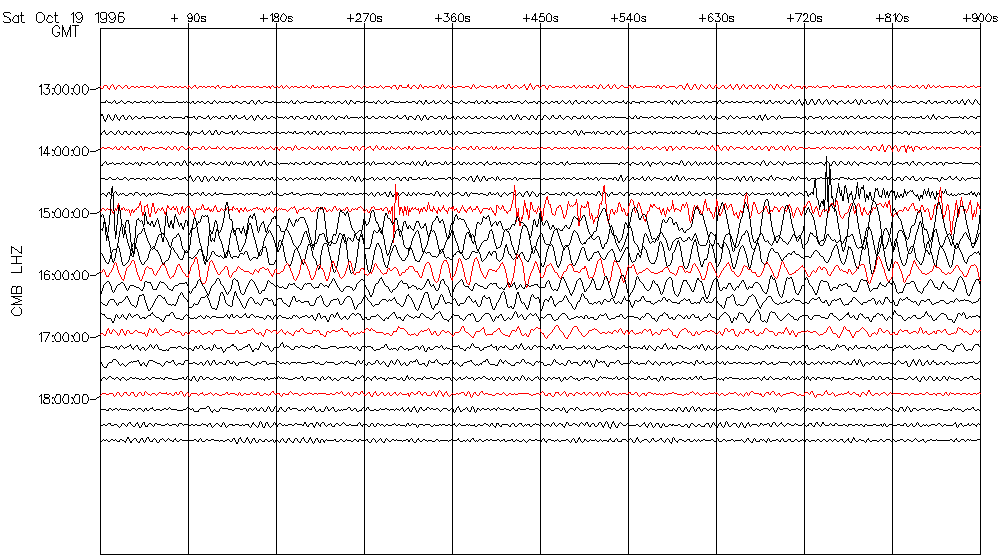
Seismology is the science of studying earthquakes. Seismologists are scientists who practice seismology (some of them get good at it, too ;-) ). We record ground shaking with an instrument called a seismometer, and the instrument makes a recording on a device called a seismograph -- sometimes on paper with ink, but mostly these days with digital computers. The recording itself is called a seismogram.
Most classical seismometers have either a heavy mass on a suspension system, like a spring, or a mass at the end of an arm which swings like a fence gate. Seismometers work by sensing the relative motion of the heavy mass and the frame of the seismometer itself. The mass ``wants'' to stay in one place due to inertia, while the frame of the instrument has to move with the ground, since the frame is firmly attached to the ground. This relative motion is sensed by the instrument, and is what is recorded by the seismograph to make a seismogram.
Charlie Thompson has built a homebrew seismometer which has the ``fence gate'' design.

Most modern instruments are actually completely computerized, and work by sensing how hard they have to work to make the mass move with the rest of the instrument. This record of the force necessary to make the mass move is stored digitally in a computer connected to the seismometer, and sent via phone lines or the Internet to a processing center, where seismologists use computers to look at the records and play with the earthquakes. These days, most seismic data processing never actually involves paper records -- though I have one of my favorite paper records in a frame on my wall.
The folks at the UC Berkeley Seismographic Station have a really cool site where you can make your own seismogram.
Below are a few example seismograms which I made using the UC Berkeley tool. All are seismograms from the CMB station, which is in the Sierra foothills at Columbia College.
This is a recording of a magnitude 3.6 earthquake 13 km SE of Mammoth Lakes which happened at 1626 UT (8:26 am PST) on 24 February 1997. Note the clear P and S wave arrivals at about 16:26:18 and 16:26:35 respectively.

This is a recording of a magnitude 6.5 earthquake in the Andreanof Islands on 08 June 1996 at 2319 UT (4:19 pm PDT). This earthquake is about 4700 km away from CMB and is a shallow earthquake. The waves with the highest amplitude (the ``biggest wiggles'') are the surface waves, which is typical in large, shallow, distant earthquakes.

This is a recording of a magnitude 6.9 earthquake in the Tonga Islands on 19 October 1996 at 1453 UT (6:53 am PST). This earthquake is about 8900 km from CMB and is a deep earthquake, with a depth of about 590 kilometers. Note that the surface waves here are fairly weak; typically, deep earthquakes don't generate strong surface waves.

Greg Anderson